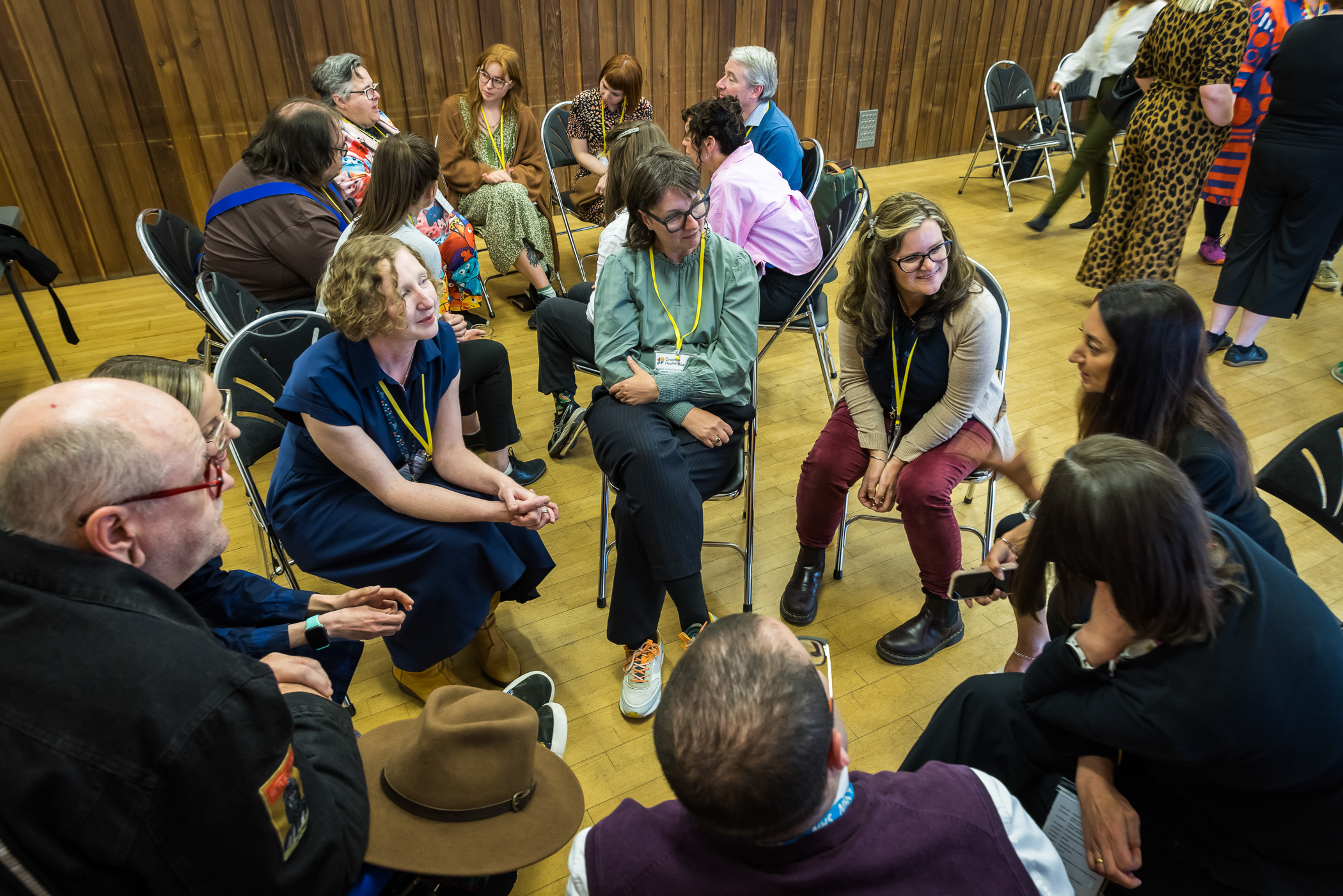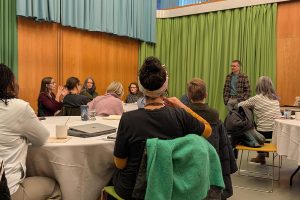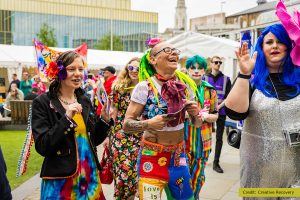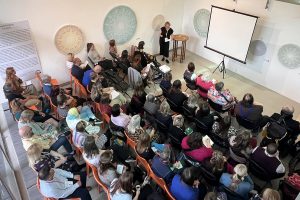
Chris Dayson, Professor at Sheffield Hallam University and Principal Investigator of the project, explains how we value the benefits of creative health.
I’ve spent much of my research career working with locally based voluntary, community and social enterprise organisations (VCSEs) to help them understand the value of their work and to demonstrate this to decision makers within the health and social care system. What these decision makers typically want to know is whether or not the work of VCSEs leads to reductions in service utilisation – particularly in costly acute and unplanned care – that can be realised in capacity or cash terms over a relatively short period of time.
In many ways this emphasis on demand reduction is understandable. The perfect storm of enduring underinvestment in key public services (aka austerity) and rising ill-health and health inequalities has led to vital health and social care services being stretched to the absolute limit. VCSEs can be an important part of the solution, but they need additional investment to sustain and enhance their work. For health decision makers, evidence that VCSE services and activities can lead to reductions in demand can be the key to unlocking that investment. I have seen this first hand through my own research into social prescribing, which demonstrated the potential for reductions in unplanned hospital care, and gave local and national policy makers the confidence to invest in social prescribing at scale.
These examples are rare, however. In practice, it is often impossible to get access to the types of data necessary to convince decision makers to invest in VCSEs. The data do exist, but they are often within clinical data systems that cannot be linked to VCSEs own data about their participants. Maybe, one day, developments in NHS digital infrastructure and AI will mean VCSEs can get access to these data, but that seems a long way off. Frustrated by a lack of progress, I’ve been thinking about what solutions we can develop to help VCSEs demonstrate their value to the health and social care systems in the meantime.
Through our Creative Health Boards project, we’ve come up with the idea of ‘democratising’ how we value the benefits of creative health (many creative health providers are VCSEs) by empowering creative health providers to demonstrate value themselves without having to rely on health and social care systems data. We also want to listen to and work with creative health participants and practitioners to develop an approach that meets their needs and doesn’t do more harm than good – we consistently hear that participants really struggle with some of the traditional evaluation and health economics questionnaires that health and social care systems like to use, with concerns that they risk upsetting or retraumatising people and disrupting the flow of creative activities.
Drawing on our previous research and innovative practice in other parts of the UK we’ve identified two simple value measures that we think could help.
- The Wellbeing Life Year (WELLBY), which uses one of the Office for National Statistics (ONS) wellbeing measures (life satisfaction) to put a value to gains in individual and population wellbeing. HM Treasury defines a WELLBY as a change in life satisfaction of one point on a scale of 0-10, per person per year – a value of £13,000 per WELLBY is recommended (2019 prices). This approach is recommended by HM Treasury in their Green Book guidance for interventions where wellbeing is likely to be a key outcome. We recently used this approach in an Evaluation of the National Green Social Prescribing programme and the findings have garnered interest and gained traction within a number of health and social care systems, including in South Yorkshire. There are signs that this type of evidence has the potential to unlock new investment and senior decision makers have started to take notice of the value these types of interventions can create.
- The simple Patient Activation Measure (PAM), which assigns a notional health service cost saving to improvements in how well people report being able to take care of the own health (known as activation). A 1-point rise in activation is correlated to a saving of up to 4 GP contacts per patient per year and to primary and secondary care demand savings of £327 per patient per year. The measure was developed by the National Association of Primary Care (NAPC) who are now working with the National Academy for Social Prescribing (NASP) to test and validate the measure further. There are a number of examples where health and social care systems have use PAM evidence to move resources from clinical services to those that are more preventative and community based.
Our Creative Health Boards team as begun a Participatory Action Research (PAR) project to explore how we can use these and other measures to democratise how we value the benefits of creative health, starting with a pilot in Doncaster based on the principles of citizen science. We have a number of phases planned over the next 12 months.
- Phase 1: co-creation of a methodology and research tools, starting with creative health participants and then involving creative practitioners and wider stakeholders from across the health and social care system, to agree upon an approach that is simple and meaningful.
- Phase 2: a data collection pilot, working closely with our Creative Health Board partners darts, Cast and Heritage to test our methodology and tentatively explore some findings. We will capture learning about what has worked well, and what hasn’t, and refine our approach as needed.
- Phase 3: we will organise a ‘Value of Creative Health Week’ where creative providers from across Doncaster will be invited and supported to take part in data collection across a wide range of creative health activities with the goal of capturing a Doncaster wide picture of the value of creative health. We hope to use the data collected to begin discussions with possible commissioners, funders and other investors about how to put creative health activities on a more sustainable footing.
This is a very different way of approaching this type of research. We are deliberately moving away from a traditional evaluation paradigm to an approach centred on what works for creative health participants and providers, and we don’t yet know how successful it will be. If it does work, we are hoping to hold a national ‘Value of Creative Health’ week before the end of the project the capture more extensive data.
Stay tuned to the Creative Health Boards website and social media channels for more information as this work progresses.




